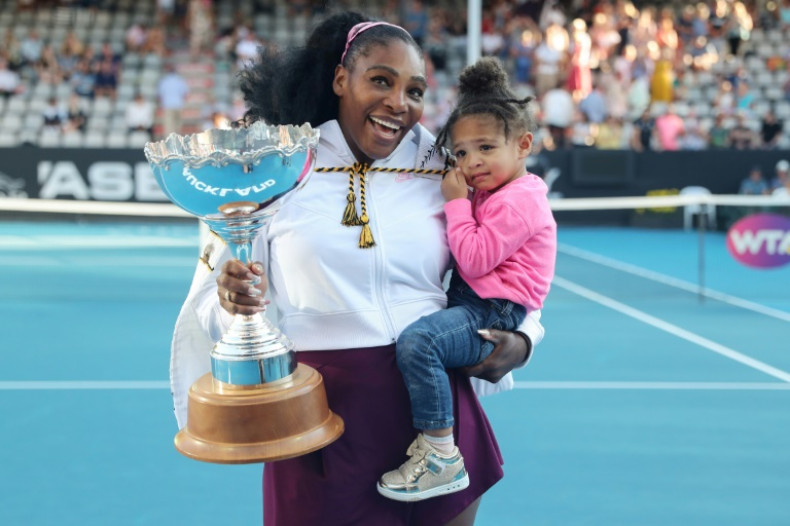Since returning to tennis as a mother in 2018, Serena Williams has not ruled the courts with the same dominance she once displayed, but has overtaken her pre-pregnancy mark in one key category: off-court endorsements.
For many years, Williams’ rank on the list of elite athlete endorsements lagged behind her remarkable career accomplishments.
But over the last few years, as she has become more identified with motherhood and non-tennis pursuits such as venture capital, Williams has at last become a superstar endorser not limited to athletic brands.
“She has no issues with polarizing anyone, which makes her a good marketing celebrity,” said Henry Schafer, executive vice president of Q Scores, whose ratings are a well-known benchmark for measuring A-lister consumer appeal.
Williams’ television spots have been diverse: for JPMorgan Chase, she read the lyrics of an LL Cool J classic; for DirecTV, she battled monsters in Wonder Woman garb; and for Michelob, she starred in a pricey 2022 Super Bowl ad.
The 23-time Grand Slam champion earned $45 million in endorsements in 2022, about four times her level in 2014, when she was the world’s number one player, according to Forbes’ annual list of top-paid athletes.
Advocates for women in sports celebrate Williams for breaking through the glass ceiling in marketing as a woman of color, but note that only two of the top 50 Forbes athletes are female.
“Much like anything with women’s sports and marketing, we have a long way to go,” said Danette Leighton, chief executive officer of the Women’s Sports Foundation.
“We’re thankful Serena’s been able to do what she’s done and received the accolades and notoriety, but there’s still a lot of work to be done.”
Leighton cited one study that said women represent 40 percent of all athletes, but women’s sports receive only four percent of the media coverage.
From the start, Williams and her elder sister Venus — a seven-time Grand Slam champion — commanded significant clothing endorsements even before they won major championships.
In Serena’s case, her first big apparel contract was with Puma, which outfitted her through her initial Grand Slam triumphs, including her first “Serena Slam,” a 12-month stretch over 2002 and 2003 in which she held all four major titles.
Williams then signed a major contract with Nike in 2003, when the Forbes list of the 50 best-paid athletes did not include any women at all.
She has often pushed the envelope in tennis fashion, donning edgy outfits such as a black Puma catsuit at the 2002 US Open, and a one-legged Nike version in Australia in 2021 to honor track legend Florence Griffith-Joyner.
But she also has suffered very public meltdowns that might have dampened marketing enthusiasm for her, the worst of which came at the 2009 US Open when she threatened a line judge in a semifinal defeat to Kim Clijsters.
By the second time she accomplished the “Serena Slam” over the 2014 and 2015 seasons, Williams’ endorsement profile drew attention for its relative modesty.
“Williams is arguably the greatest female athlete of all-time, but sponsors have often eschewed” her, Forbes said in 2015, noting that she trailed Maria Sharapova in endorsements for the 11th straight year, despite dominating the Russian tennis star and owning many more titles.
“Williams’ skin color, muscular body type and one memorable outburst at the US Open of 2009 have all been blamed by pundits for the endorsement gap between Williams and Sharapova,” the magazine said.
“The reality is that there is no one magic answer for the disparity.”
Marketing experts say Williams’ recent leap into the endorsement stratosphere reflects her greater relatability since becoming a mother and being forced to juggle work and family life.
With Margaret Court’s record of 24 Slam titles in her sights, Williams has reached four major finals as a mother, but lost all of them — setbacks that have perhaps endeared her to the public.
The twilight of Williams’s career has dovetailed with societal pushes for better racial and gender equality, and many brands are now more eager to be associated with a successful Black woman.
Q Scores rates Williams a 78 in terms of recognition, well above other female athletes. Her “positive” Q rating of 17 is now better than her “negative” rating of 14, said Schafer.
That means Williams has a more favorable ratio than athletes like NBA superstar LeBron James and NFL legend Tom Brady.
Leslie Allen, a former top US tennis player who is African American, said the business world has long underestimated the ability of people like Williams to appeal to consumers of all races, calling her marketing success “overdue.”
Allen rejoices that the other woman on the Forbes list of top athletes is four-time Grand Slam champion Naomi Osaka, who is of Haitian and Japanese descent.
“I love the fact that the top two women on that list are women of color, which means we have come a long way in terms of being able to be universally accepted as viable brand ambassadors,” Allen said.
“That was impossible 20 years ago.”




MEET IBT NEWS FROM BELOW CHANNELS
© Copyright AFP 2022. All rights reserved.







